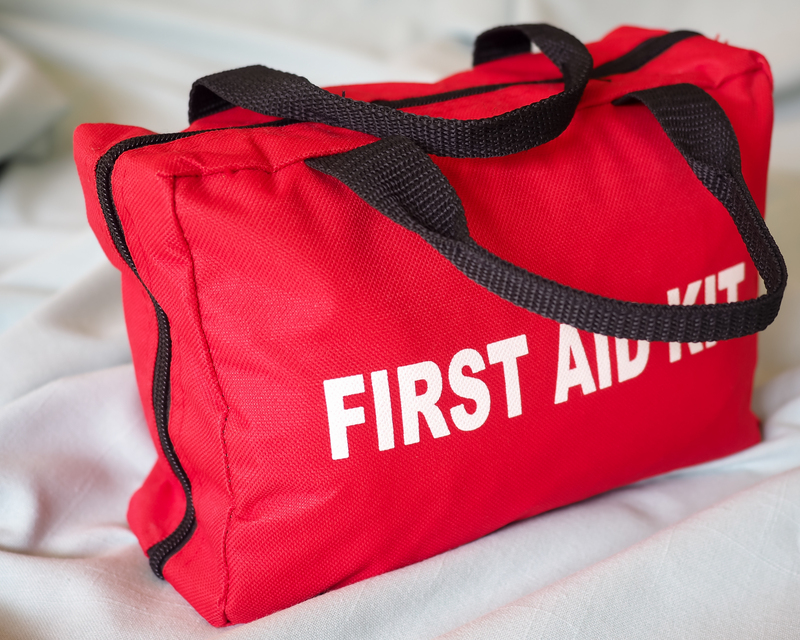Transform Your Heavy Lifting Skills Solo
Posted on 29/05/2025
Transform Your Heavy Lifting Skills Solo: The Ultimate Guide to Self-Powered Strength
Are you ready to level up your heavy lifting skills alone? If you're aiming to transform your solo strength training, mastering the art of lifting heavy without a spotter is both empowering and necessary. This all-encompassing guide delves into the essentials of improving your heavy lifting skills solo, ensuring safety, maximizing results, and maintaining continual progress--no gym buddy required!

Why Master Heavy Lifting Alone?
Training solo isn't just about convenience; it's about self-reliance, discipline, and achieving your fitness goals on your terms. While training partners can offer motivation, solo heavy lifting cultivates confidence, autonomy, and self-mastery. Here's why investing in your solo lifting skills pays off:
- Schedule freedom: Train whenever suits you.
- Focus: No distractions; concentrate fully on form and intensity.
- Self-awareness: Develop keen body awareness, crucial for lifting safely.
- Accelerated progress: Overcome mental blocks and depend on your own resolve.
Common Myths About Solo Heavy Lifting
There are persistent myths that lifting heavy without a spotter is dangerous or less effective. With the right approach, solo heavy lifting can be as safe--and even more rewarding--than lifting with others. This article will break down how to neutralize risks and transform your heavy lifting skills on your own.
Essential Safety Principles for Solo Heavy Lifting
Your first priority as a solo lifter should be safety. Weightlifting alone demands more attention to technique and preparation. Follow these critical guidelines:
1. Master Form Before Increasing Weight
Never compromise technique to "go heavier." Practicing with lighter weights until your form is flawless prevents injuries and lays a strong foundation for sustainable, effective lifting.
2. Always Use Safety Equipment
- Power cages/racks: These are essential for bench, squat, and overhead presses. Set safety pins/crash bars just beneath the lowest bar position.
- Weight collars: Secure plates to avoid accidental slips.
- Chalk and grip gear: Enhance grip stability and confidence.
3. Learn Emergency Bar Bailouts
Spend time practicing how to exit safely from failed reps. This is especially important for exercises like the squat and bench press. Don't load heavy until you're comfortable with these maneuvers.
4. Don't Skip Warm-Ups or Cool-Downs
Properly warming up increases blood flow, activates muscle groups, and reduces injury risk. Likewise, cooling down and stretching help prevent stiffness and improve recovery.
Programming Your Solo Heavy Lifting Transformation
Lifting heavy alone isn't just about moving big weights--it's about smart programming. Here's how to build a solo plan that maximizes both safety and results.
Set Clear, Time-Bound Goals
- Strength milestones: E.g., Deadlifting 1.5x bodyweight within 6 months.
- Consistency targets: Train 3 to 4 heavy sessions weekly.
- Technique improvement: Film lifts for form review and progress tracking.
Foundational Lifts for Solo Strength Gains
For best results in your solo lifting journey, focus on compound movements:
- Deadlift: Variations--conventional, sumo, trap bar.
- Squat: Back, front, goblet, or box squats (start with those easier to bail).
- Bench press: Use a power rack for safety, or substitute with heavy dumbbell presses.
- Overhead press: Both seated and standing.
- Pull movements: Rows, pull-ups, and chin-ups for balance and back strength.
Optimizing Technique: Lifting Heavier, Smarter & Safer on Your Own
Progressive Overload Is Your Secret Weapon
To continually improve heavy lifting skills solo, focus on progressive overload--gradually increasing weight, reps, or sets over time. Ensure increments are small (2.5-5 pounds) and consistent.
Mind-Muscle Connection
Pay close attention to how your muscles feel during each rep. Developing a strong mind-muscle connection helps you fire the right muscles, maximizing strength gains and minimizing injury risk.
Controlled Repetition Tempo
Rushing through lifts--especially when alone--invites errors. Use a controlled cadence:
- Lower phase: 2-4 seconds
- Pause: 1 second at the bottom
- Lift phase: Explode up with control
Use Alternatives for Maximum Safety
Certain exercises can be modified for solo lifters:
- Trap bar deadlift over traditional deadlift for a safer, more back-friendly movement.
- Dumbbell presses instead of barbell bench pressing if no safety arms are available.
- Bulgarian split squats to load legs heavily without needing maximal spinal loading.
Solo Lifting Techniques: Transform Heavy Lifting Without a Spotter
- Pin squat: Set the pins in a rack to catch the bar at your lowest squat point.
- Board press: Limiting bar depth lets you train heavy bench presses without a risky bottom position.
- Dead-stop rows: Start each rep from the floor to avoid cheating and reinforce safe mechanics.
Incorporate these adaptations into your training for maximal safety and effectiveness while lifting heavy alone.
Mental Strategies for Solo Heavy Lifters
Mindset separates the average from the exceptional. Solo lifting is as much a
- Visualization: Picture yourself completing heavy lifts successfully--engage all your senses in the process.
- Self-talk: Replace doubts with mantras ("I am strong, I am capable").
- Reward progress: Celebrate achieved milestones, no matter how small.
Track Your Progress Diligently
Maintain a workout journal or use fitness apps to log every session. Key areas to track:
- Weights lifted
- Reps & sets completed
- Rest periods
- Form notes
- Physical & mental cues
Nutrition & Recovery for the Solo Heavy Lifter
Even the best training program falls short without solid nutrition and recovery. Here's how to fuel your solo strength transformation:
- Prioritize protein: Aim for 1.2-2.0 g per kg of body weight daily.
- Stay hydrated: Dehydration = decreased performance and recovery.
- Embrace carbs & healthy fats: They power your lifts and aid in repair.
- Supplements: Whey protein, creatine, and omega-3s can support your efforts--but whole foods come first.
- Rest is non-negotiable: Sleep 7-9 hours nightly. Listen to your body--if you're fatigued, prioritize rest, not just another session.
Equipment Essentials for Safe Solo Lifting
Setting up your home or garage gym for safe, effective solo heavy lifting is easier than you think. Here's what to consider:
- Sturdy power rack: Adjustable safety bars are a must.
- High-quality barbell and plates: Durability is key for repeated heavy lifting.
- Adjustable bench: For presses and rows.
- Weight plates and dumbbells: Cover a wide range of loads.
- Resistance bands: For warm-up and accessory work.
- Mirrors: For form feedback and motivation.
Overcoming Common Challenges in Solo Heavy Lifting
Every solo lifter faces obstacles--it's how you respond that counts. Here are common heavy lifting solo hurdles and how to trouble-shoot them:
Motivation Wanes
- Vary your training with new exercises or rep schemes.
- Set weekly or monthly challenges.
- Join online communities for inspiration and support.
Your Progress Plateaus
- Change tempo, rep range, or implement advanced techniques like drop sets.
- Revamp your program every 6-8 weeks.
- Reflect on recovery, nutrition, and sleep habits.
Fear of Failure (Or Injury)
- Only attempt weights you're confident moving safely.
- Rehearse bail-out procedures until second nature.
- Refer to reputable sources and professionals for guidance as needed.
Sample Solo Heavy Lifting Routine
Ready to transform your heavy lifting skills solo? Try this classic, proven, full-body strength routine:
- Warm-Up: 5-10 minutes light cardio + dynamic stretches
- Deadlift: 4 sets of 4-6 reps
- Bench Press or Dumbbell Press: 4 sets of 6 reps
- Front Squat or Goblet Squat: 4 sets of 6 reps
- Barbell Row or Pull-Up: 4 sets of 6-8 reps
- Accessory (core, calves, arms): 2 exercises, 3 sets of 12 reps
- Cool-down/stretch: 5-10 minutes
Train three times a week, increasing weights steadily as you master technique and recovery.

Final Tips to Revolutionize Your Heavy Lifting Skills Solo
- Consistency is king: Transforming your heavy lifting skills is about dedication, not perfection.
- Prioritize safety: Always choose lifts and methods that reduce risk.
- Listen to your body: Progress--but never at the expense of your health.
- Keep learning: Study new techniques, record your form, and seek constructive feedback.
The Empowerment of Solo Lifting--Unleash Your Full Strength Potential
Transforming your heavy lifting skills solo isn't just about brawn--it's about discipline, knowledge, and resilience. Each session alone, you push boundaries and prove your own inner drive. With each progressive lift, you build not only your body but your confidence, independence, and mastery.
**Ready to make the leap?** With the strategies above, your journey to exceptional solo strength starts now. Get lifting--on your terms!
Frequently Asked Questions (FAQ) About Transforming Heavy Lifting Skills Solo
-
Is solo heavy lifting safe for beginners?
Yes! With a focus on strict form, gradual progressions, and safety equipment, new lifters can build confidence solo. -
Should I ever go to failure when lifting alone?
It's not recommended for most barbell lifts without a spotter. Stay one or two reps away from technical failure, especially on compound lifts. -
How do I stay motivated when training alone?
Set clear goals, track progress, vary workouts, and engage with a supportive fitness community online. -
What if I hit a plateau?
Reevaluate your nutrition, recovery, and program. Change rep ranges, lift order, or introduce new variations for renewed stimulus.
Transform your heavy lifting skills solo today--empower yourself, maximize performance, and embrace your inner athlete!





